An introduction to Lean
Laurence McCahill, design lead and co-founder of Spook Studio, spills the beans on the Lean Startup and Lean UX movements, which bring a groundbreaking approach to product development, and what it means for designers, developers and clients
If there’s one thing the Japanese know a lot about, it’s effective car production. And that’s where the term Lean derives from – it all began at Toyota when the car manufacturers found a new, more efficient method of producing the cars valued by its customers.
The principles learned at Toyota became known as Lean, and are now more of a management philosophy that can be applied to almost any business. At its core is the principle of creating value by reducing unnecessary risk and waste. More recently the term has become synonymous with startups, thanks to Eric Ries (a successful Silicon Valley entrepreneur and former software engineer) and his Lean Startup movement.
The Lean Startup is modelled around the already established disciplines of customer development and agile software development, and claims to be a scientific method for creating innovative products (whether a website, app or service). Lean thinking is not new but has had lots of media coverage recently mainly as a result of Ries’s work.
Over the last year or so the design community has also embraced Lean through the Lean UX movement, thanks to Janice Fraser and Jeff Gothelf amongst others.
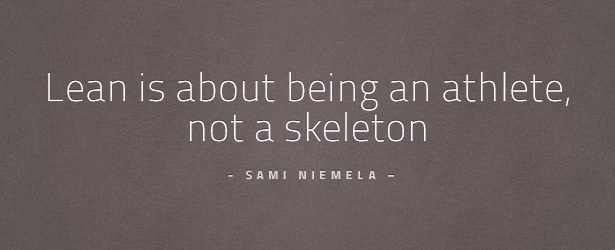
So what makes Lean lean?
- More focus on the experience being designed, with less focus on deliverables -> Reduces cycle time.
- Questioning and testing assumptions -> Reduces uncertainty by focusing on the problem, not the solution.
- Evidence-based decision making -> More facts, less intuition.
- A collaborative approach to designing products -> Reduces friction and empowers the client.
- Better outcomes as a result of regular iteration -> Less waste and a more successful product.
Why now?
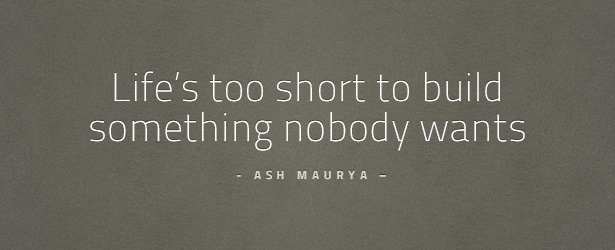
Up until recently things seemed fairly straightforward. A client would come to you with a ‘known’ problem and it was up to you to propose the solution.
Usually the drill went something like this:
Get the Creative Bloq Newsletter
Daily design news, reviews, how-tos and more, as picked by the editors.
- Client supplies brief to agency.
- Agency confirms scope and budget.
- Agency creates wireframes and designs.
- Client signs off designs, ready for building.
- Agency creates prototype ready for testing.
- Client signs off prototype.
- Usability testing.
- Amends, fixes and launch.
This process can work for projects where there’s little degree of uncertainty about the business model, customers, suppliers or implementation. However, this is rarely the case as often you’ll be basing your proposed solution on unvalidated assumptions. Both you and your client may assume too much, perhaps misunderstanding the problem you’re trying to solve.
More and more people are living a great deal of their lives on the internet and as a result becoming more savvy. Unless a web product works the way they want it to they’ll quickly ditch it in search of a better alternative. So early on in any project we need to be able to learn from our potential customers what they do rather than what they say they do.
It’s the clever startups that learnt this lesson early that are bringing on the downfall of long-established companies and turning themselves into multi-billion pound businesses.
Cheaper, faster, better
Cloud computing, SaaS (software as a service) products, fewer technology barriers, greater access to rich analytics and increased mobile use have meant that the opportunities open to us are now only limited by our ambitions. Third-party services allow us to quickly create rich integrated services and startups are easier to get off the ground. All this means we can move faster and react quicker to changing customer needs.
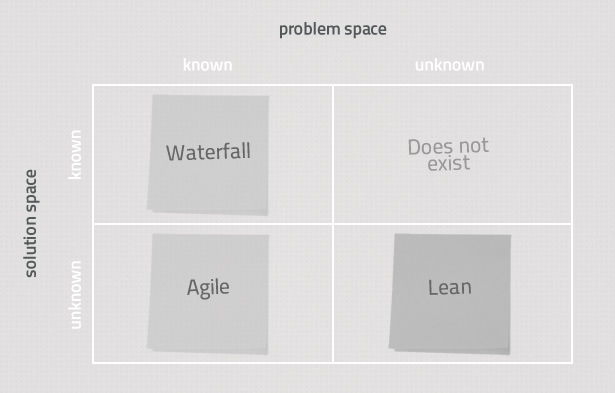
OK, so how do I apply it?
1. Learn about your customers
For projects where there's a high degree of uncertainty (in terms of the problem and solution) Lean comes into its own. Only by validating your assumptions can you increase your chances of success.
A key component of Lean – customer development – is a method to help you find ‘product-market fit’, with the aim of delivering a product that people love. The best way of doing this is through interviews with prospective customers (preferably face-to-face). Other techniques include surveys, landings pages with email sign-up forms and demos to test various aspects of the business model (pricing, positioning, segments, and so on).
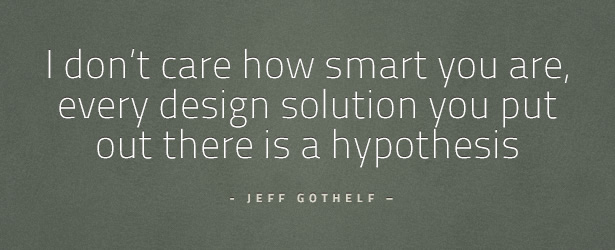
2. Build something to show them
Create your ‘minimum viable product’ (or MVP in Lean Startup jargon), which is the first version of your product that will enable you to learn the most. Perform regular testing with users, iterate and improve as you go (but don’t just throw features at it). Where possible create low-fi prototypes before building the real thing. Make changes when there’s less risk and when you’re not too precious about what you’ve created. Although be careful that you don’t create something that is really minimal. It still needs to be appealing to your target audience, just do as little as you need to achieve a base level of design and usability.
3. Measure the response
Focus on metrics that really matter such as sign-up conversions, payments, referrals, returning visits and NOT vanity metrics such as total number of hits.
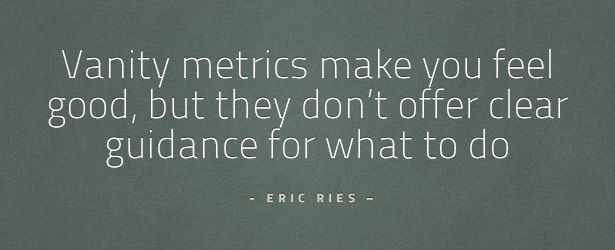
4. Rinse and repeat
Keep learning, building and measuring. It’s this feedback loop that ensures you get to where you want to be.
Some useful tools to help with running your Lean projects can be found here.
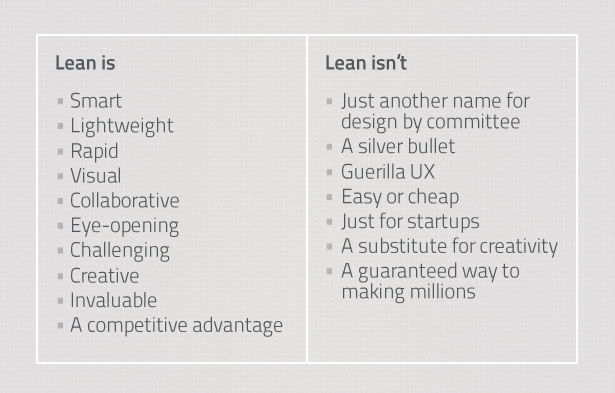
When Lean doesn’t work well
- When you’re already fixed on a solution.
- Sticking too rigidly to the process (and not adapting it to your circumstances).
- Where there are invisible stakeholders.
- Where there’s a lack of communication between product, design and development.
- When there’s too many egos and lots of company politics.
Making it work in an agency
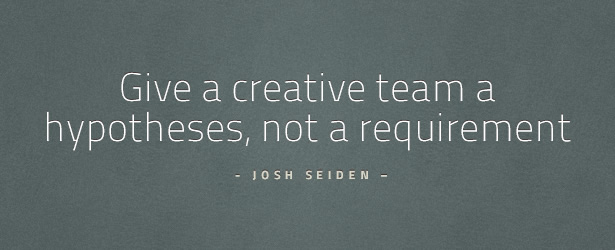
We work with early-stage startups and often get approached by entrepreneurs with a great idea, however more often than not they have no validation to show that this could equate to a successful product or scalable business. It can be a painful lesson for many that after spending lots of time, energy and cash, there's no demand for what they've built.
In the past we've found it can been quite a challenge to get buy-in for from clients or stakeholders for customer involvement. However, the Lean Startup movement has meant that the business community has finally embraced what many user experience design professionals have known for years – that it's important to speak to your customers, measure, test and iterate your product or service over time.
Our approach at Spook Studio includes elements of lean UX, agile development and lean startup methodologies, but with any process there needs to be some flexiblity and common sense – taking the elements that work best for you within your business. We find it reduces waste, encourages more collaborative working, closer customer involvement and, ultimately, helps to create more relevant and useful products. However, for many projects we still use elements of traditional ‘waterfall’ development when time, scope and/or budget are fixed and immovable. After all, we live in the real world and change doesn’t happen overnight.
Incorporating elements of lean within your projects should be an evolutionary process. As designers and developers we need to adapt to new ways of working but without diving in head first. Your clients won't thank you and you may get your fingers burnt. Choose the right process for each project (and make the client aware of this upfront). We started off using lean methods for our own side projects where there was less risk and a better chance to learn and make mistakes. This has been a great learning curve – taking the lean approach to lean!
So who else is using Lean? Well, one big company in the UK that adopts the Lean approach to their businesses is Forward Internet Group (£120m annual turnover). Agencies such as Made by Many, Thoughtworks and Proof are also shaking up the agency world. Other successful companies that have used Lean techniques include GroupOn, Twitter, Facebook, Instagram, Kissmetrics, Zynga, Dropbox, Heroku, Etsy and Turntable. I’ve also heard of Lean being applied to marketing campaigns, healthcare, education and even writing a book.
In summary
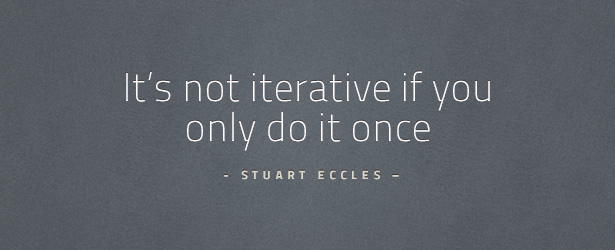
- Learn often, fail fast and get out of the building!
- Fake it before you make it.
- Start small then scale up.
- Keep iterating.
- Don’t lose sight of the vision.
- MVP: minimum awesome not awful.
- The web is your lab, keep testing and measuring.
Now it's over to you ...
Lean events:
- The Lean Startup Machine – an innovation accelerator weekend workshop
- Leancamp – the ‘unconference’
- Lean startup circles/meetups around the world

Thank you for reading 5 articles this month* Join now for unlimited access
Enjoy your first month for just £1 / $1 / €1
*Read 5 free articles per month without a subscription

Join now for unlimited access
Try first month for just £1 / $1 / €1

The Creative Bloq team is made up of a group of art and design enthusiasts, and has changed and evolved since Creative Bloq began back in 2012. The current website team consists of eight full-time members of staff: Editor Georgia Coggan, Deputy Editor Rosie Hilder, Ecommerce Editor Beren Neale, Senior News Editor Daniel Piper, Editor, Digital Art and 3D Ian Dean, Tech Reviews Editor Erlingur Einarsson, Ecommerce Writer Beth Nicholls and Staff Writer Natalie Fear, as well as a roster of freelancers from around the world. The ImagineFX magazine team also pitch in, ensuring that content from leading digital art publication ImagineFX is represented on Creative Bloq.
